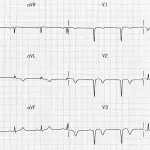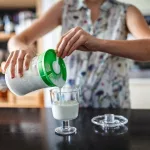Hey there! If you’ve ever needed a rescue shot for a sudden crash in blood sugar, you probably know the calm relief that comes with a Gvoke injection. But, like any medication, it can bring a few unwanted reactions along for the ride. In this friendly guide we’ll walk through the most common and serious Ginvoke side effects, show you how to tell the difference between a harmless bump and a red‑flag warning, and give you practical tips to manage side effects so you stay safe and confident.
Why Use Gvoke?
Gvoke is a glucagon analog designed for rapid treatment of severe hypoglycemia—those moments when your blood sugar drops so low you can’t swallow or think straight. It’s approved for anyone with diabetes aged 2 years and up, and comes in a handy autoinjector (HypoPen), a pre‑filled syringe (PFS), or a vial‑kit. The magic? A single 1 mg dose (or 0.5 mg for younger/smaller patients) can lift your glucose level in just a few minutes, buying you the time to get food and get back on track.
According to the official Gvoke dosage guide, adults and teens (≥ 12 years or ≥ 45 kg) receive 1 mg, while kids 2–<12 years or < 45 kg get 0.5 mg. The dose can be repeated after 15 minutes if needed, but never more than two doses without medical supervision.
What “Side Effects” Really Mean
Side effects are basically the body’s unsolicited response to a drug. They aren’t “bad” by definition, but some can be uncomfortable or even dangerous. Understanding the spectrum—from mild nausea to rare allergic reactions—helps you balance the lifesaving benefits of Gvoke against the risks.
Common & Mild Reactions
Most people who use Gvoke experience at least one of these:
- Nausea (about 30 % of users)
- Vomiting (≈ 16 %)
- Injection‑site pain, redness, or swelling (≈ 7 %)
- Headache (≈ 5 %)
Quick‑Fix Tips
These symptoms are usually short‑lived. Here’s what I’ve learned from talking with diabetes educators and a few friends who’ve been there:
- Stay upright for a few minutes after the shot—gravity helps settle the stomach.
- Sip a glass of water; hydration often eases nausea.
- Apply a cool (not ice‑cold) compress to the injection site to lessen swelling.
- If you feel a headache brewing, a quick walk and a glass of juice can do wonders.
When to Call Your Doctor
Even mild reactions deserve a quick check‑in if they linger longer than 30 minutes, get worse, or you notice something odd, like a rash that spreads. Your provider can adjust the dose or suggest an alternative glucagon analog.
Side‑Effect Log (Downloadable)
Keeping a simple log can make those conversations smoother. Record the date, dose, symptoms, severity, and what you did about it. Over time you’ll spot patterns and know exactly what to tell your doctor.
Less Common & Moderate Reactions
These don’t happen to everyone, but they’re worth a heads‑up.
Skin Reactions & Necrolytic Migratory Erythema (NME)
A small subset of users develop a red, itchy, scaly rash—sometimes called NME—particularly on the face, groin, or legs. It’s rare (less than 1 % of cases) but can be uncomfortable.
What to Do
- Gently cleanse the area with mild soap.
- Avoid scratching; use a fragrance‑free moisturizer.
- Contact your healthcare team promptly; they may prescribe a topical steroid or suggest switching products.
Cardiovascular & Neurologic Symptoms
Some people notice a fast or irregular heartbeat, dizziness, or light‑headedness—often a response to the rapid rise in glucose.
Red‑Flag Checklist
If you experience any of the following, it’s time to seek medical attention right away:
- Chest tightness or pounding heart.
- Severe dizziness that makes you feel you might faint.
- Sudden vision changes (blurred, tunnel vision).
- Confusion, seizures, or loss of consciousness.
According to RxList’s safety summary, these serious reactions, while rare, require immediate care—often an emergency department visit.
Rare & Serious Reactions
These are the “just in case” scenarios you want to be prepared for, even though they’re extremely uncommon.
Anaphylaxis (Severe Allergic Reaction)
Symptoms include swelling of the face, lips, or tongue, trouble breathing, hives that spread quickly, or a sudden drop in blood pressure. This is a medical emergency.
Emergency Action Plan
| Step | Action | Why |
|---|---|---|
| 1 | Stop using the current device. | Avoid further exposure. |
| 2 | Administer epinephrine (EpiPen) if you have one. | Counteracts airway swelling. |
| 3 | Call 911 or go to the nearest ER. | Professional monitoring is crucial. |
| 4 | Inform your endocrinologist about the reaction. | They’ll adjust your rescue plan. |
Severe Cardiovascular Events
Rare reports mention arrhythmias, rapid heartbeats, or even heart attacks shortly after dosing. If you feel a racing heart that doesn’t calm down within a few minutes, seek care.
Neurologic Emergencies
Although glucagon’s purpose is to lift glucose, a sudden surge can occasionally trigger seizures in people with a history of low‑blood‑sugar seizures. If you seize, call emergency services immediately.
How Dosage Influences Side‑Effect Risks
Higher doses (1 mg) are associated with a slightly higher incidence of nausea and vomiting compared with the 0.5 mg pediatric dose. That’s why the dose is carefully matched to age and weight.
Off‑label “double‑dosing” isn’t recommended unless a healthcare professional says it’s safe—doing so can increase the likelihood of both mild and serious side effects.
Choosing the Right Formulation
Each Gvoke delivery method has its own pros and cons.
| Formulation | Ease of Use | Typical Injection‑Site Reactions | Best For |
|---|---|---|---|
| HypoPen Auto‑Injector | Very easy (push‑button) | Low‑moderate | People who need a quick, no‑prep option |
| Pre‑Filled Syringe (PFS) | Moderate (draw & inject) | Moderate | Those comfortable with a small amount of handling |
| Vial‑Kit (vial + syringe) | Complex (mix & draw) | Higher (handling) | Clinics or trained caregivers |
All versions are single‑use only. Re‑using a device can increase infection risk and worsen injection‑site irritation.
Practical Strategies to Prevent & Manage Side Effects
Before the Shot
- Store the device at room temperature (15‑30 °C); avoid freezing.
- Check the expiration date—old glucagon can be less effective and cause more irritation.
- Wash your hands and clean the injection site with an alcohol swab.
- Keep a simple carbohydrate snack (glucose tablets, juice) nearby for after the dose.
After the Shot
- Monitor blood glucose after you’re awake—aim for > 70 mg/dL.
- Record any symptoms in your side‑effect log.
- If nausea or vomiting persists for > 30 minutes, sip clear fluids and call your provider.
- Never drive or operate heavy machinery until you’re sure you’re stable.
Lifestyle Tweaks
Staying hydrated, maintaining regular meals, and avoiding excessive alcohol can reduce the frequency of severe hypoglycemia—and therefore the need for rescue doses.
When to Talk to Your Healthcare Provider
Regular follow‑ups (every 3–6 months) give your diabetes team a chance to review your rescue plan, adjust Gvoke dosage, or consider alternative glucagon analogs if side effects become a recurring problem.
If you notice any of the following, schedule a visit sooner:
- Repeated nausea or vomiting after each dose.
- Any skin rash that doesn’t clear within a few days.
- Episodes of fast heartbeat, dizziness, or chest discomfort.
- Any sign of an allergic reaction, no matter how mild it seems.
Trusted resources such as the FDA’s drug safety database and the American Diabetes Association’s medication guide can help you stay up‑to‑date on the latest recommendations.
Wrapping It All Up
Living with diabetes means you need a solid plan for those unexpected lows, and Gvoke is one of the most reliable tools in the kit. Yes, it can cause side effects—from the everyday nausea that feels like a brief roller‑coaster dip to the rare allergic reactions that demand immediate action. By recognizing the patterns, keeping a simple log, and staying in touch with your care team, you can manage those reactions confidently.
Remember, you’re not alone on this journey. Share your experiences, ask questions, and help each other stay safe. If you’ve tried Gvoke before, what side effects did you notice, and how did you handle them? Drop a comment, reach out to your diabetes community, or simply give yourself a pat on the back for being proactive about your health.
Stay empowered, stay prepared, and keep those glucose levels where they belong—in the safe zone.

















Leave a Reply
You must be logged in to post a comment.